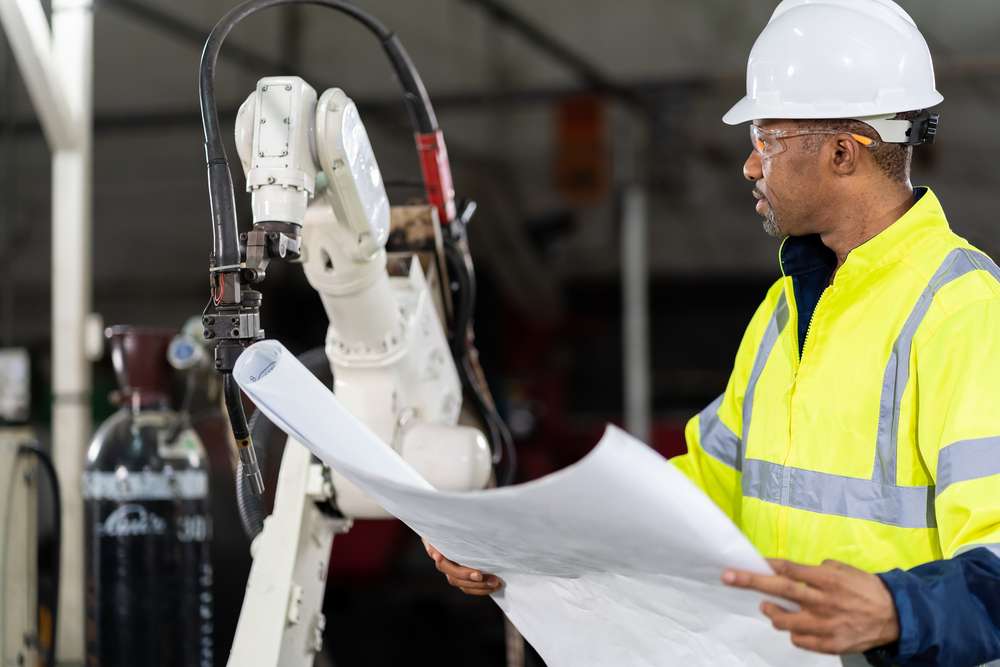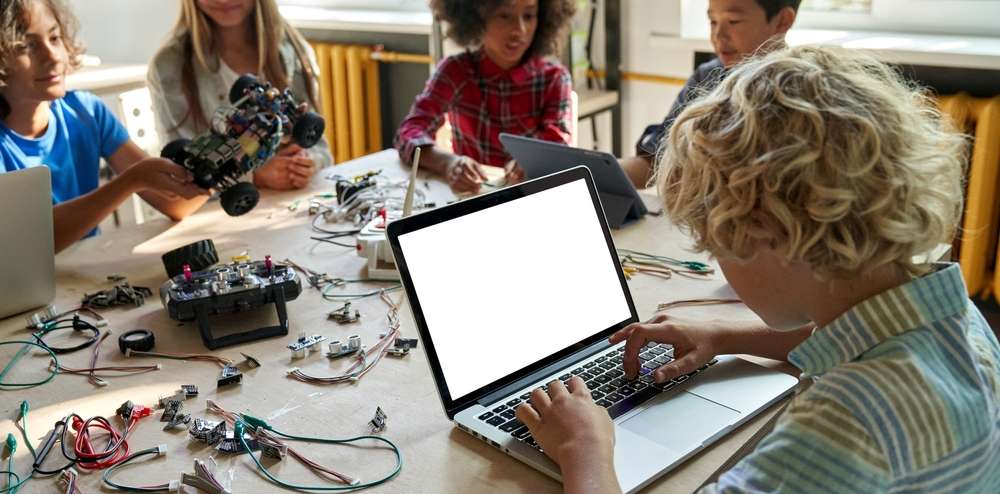
Understanding the Intersection of AI and Instructional Design
Artificial Intelligence (AI) has been steadily changing various aspects of human life, and education is no exception. The intersection of AI and instructional design becomes especially intriguing considering both disciplines’ shared objective of optimizing learning. Fundamental to understanding this intersection is appreciating the roles and possibilities that AI brings into the education sector, especially in instructional design.
Instructional design pertains to the practice of creating “instructional experiences which make the acquisition of knowledge and skill more efficient, effective, and appealing.” It involves the use of a systematic methodology in designing courses or learning experiences to ensure learners are educated in a planned, structured manner that aligns with their learning objectives.
Artificial Intelligence, on the other hand, involves the simulation of human intelligence processes by machines, particularly computer systems. These processes encompass learning, reasoning, problem-solving, understanding language, and perception.
When AI is applied to instructional design, it enhances the development and delivery of customized, efficient, and adaptive educational experiences. AI can analyze vast amounts of data to identify patterns and trends, making it possible to align instruction to individual learner needs and enabling the delivery of personalized learning experiences.
One of the most significant impacts of AI on instructional design is the ability to create adaptive learning platforms. These platforms use AI algorithms to adapt to each learner’s speed, understanding, and progress, allowing them to go over the material at a pace that suits them best. This ability is a tremendous leap from the traditional one-size-fits-all method of teaching, paving the way for student-centered learning.
AI’s ability to handle large data also comes in handy in providing insights into learning patterns that educators could tap into when designing instruction. It can outline the areas students excel in and where they struggle, making room for improvement in the instructional design process. Furthermore, learning platforms integrated with AI can provide real-time feedback, not only to students but also to educators, so they can improve instruction in nearly real time.
Additionally, the integration of AI technologies like Natural Language Processing (NLP) into instructional design not only enhances the learning experience but also changes how assessments are carried out. For instance, automated grading of assignments and tests saves educators considerable time, allowing them to focus more on individual student progress, instruction strategies, and course design.
Moreover, AI facilitates the creation of personalized learning paths based on students’ learning styles, knowledge level, and preferences. Each learner gets a unique path with the right degree of challenge, ensuring that no one falls behind or gets bored.
In conclusion, AI is transforming the landscape of educational instruction and design. Through intricate algorithms and vast data-processing capabilities, AI enhances the learning experience to be more personalized, adaptable, engaging, and efficient – truly revolutionizing instructional design.

AI’s Role in Customizing Individual Learning Experiences
Artificial Intelligence (AI) has a significant role in transforming education, specifically in personalizing learning experiences. Its ability to adapt to a learner’s needs, customize content, deliver appropriate interventions, and tailor feedback is revolutionizing how we approach teaching and learning.
One of the biggest challenges in conventional teaching methods is the ‘one size fits all’ approach, where a whole group of students is taught the same content, regardless of their individual learning abilities and styles. AI solves this problem by enabling a more personalized learning experience. It can quickly analyze a student’s strengths, weaknesses, learning pace, and the methods they respond to best, creating a learning pathway that adapts to their unique needs.
AI systems can be designed to provide individualized tasks aimed at building the skills where the learner is lacking. This can range from recommending reading materials or resources to enhance their understanding, to challenging them with questions that test their comprehension on a topic. As the learner progresses, the system adjusts the tasks to their updated skill level. This adaptive learning uses AI algorithms to continually reassess each student’s learning progress and procures new data to refine its teaching approach.
AI can also use learner data to identify gaps in understanding and predict areas the learner may struggle with in the future. By doing so, the learning content and instructions are adjusted in real time to meet the learner’s needs, predicting future knowledge gaps before they become obstacles to progress.
Instant feedback is another benefit AI brings to the learning process. Traditional learning environments may see students waiting days or even weeks to receive graded work back. An AI system, however, can provide immediate feedback, praising correct answers, and providing further explanation or resources for incorrect ones. This timely feedback can significantly enhance the student’s understanding and reinforce their learning.
Furthermore, AI-driven systems can also adapt to different learning styles. Howard Gardner’s theory of multiple intelligences suggests that there are multiple ways to learn and that each person has a unique mix of these intelligences. AI can differentiate between a visual learner, aural learner, verbal learner, or a logical learner and provide resources that best suit their learning style.
To sum up, AI opens up new possibilities for instructional design by offering personalized learning experiences. It attends to learner differences by tailoring instructional material according to their learning style, pace, and immediate needs. AI’s capability of analyzing vast amounts of data in real-time allows it to provide real-time feedback, enabling more efficient and effective learning experiences.

AI-driven Analytics for Improved Curriculum Design
Introducing artificial intelligence (AI) into curricular design has fundamentally changed the process, allowing for a more targeted approach to learning. This segment of the integration embodies an innovative approach to education that allows systems to adjust and evolve to deliver personalized learning experiences, identify gaps in the curriculum, and enhance student engagement.
One of the key benefits of AI-driven analytics in curriculum design is the ability to provide personalized learning pathways. AI can track and analyze students’ progress in real-time, mapping out individual strengths and weaknesses. This data can then serve to adapt the curriculum instantaneously, enabling a tailored learning process that caters to each student’s unique needs. It’s a significant departure from the one-size-fits-all learning model, assisting learners of various aptitudes and competencies to engage with the course material at their own pace and level.
Data analytics further allow designers to spot trends and patterns within learners’ behaviors, illuminating gaps within the curriculum. For instance, if a large number of students continually struggle with a certain topic or material, this might indicate an issue with how the content is taught, as opposed to being a reflection of the learners’ ability. AI can recommend adjusting subject matter approaches, methodologies, or resources used to teach the material.
Moreover, AI systems can give educators feedback about their teaching methods. If the system notices that students perform better when their instructor utilizes a specific type of instructional method, then it can suggest for the teacher to utilize that method more frequently. This allows for a cyclical process of teaching, feedback, and adaptation, encouraging the betterment of educational strategies over time.
Another worth noting aspect of AI-driven analytics is its ability to improve student engagement. AI software often incorporates engaging elements such as games, interactive assignments, or virtual tutors to enhance the learning experience. These tools can motivate and encourage students to interact more deeply with the content. At the same time, AI can also analyze this interaction to understand what elements are most engaging for students and integrate more of these elements into the curriculum design.
All these improvements point to ideals: more targeted learning, better engagement, effectiveness in teaching, and improved course design. In the bigger picture, this emanates the vision of creating a more efficient, engaging, and accessible education system, supporting the promise of lifelong learning regardless of geographical location or economic condition.
But the use of AI doesn’t come without caution. Concerns arise considering data privacy as an enormous amount of student data is analyzed. Additionally, the risk of over-reliance on AI can lead to decreased human interaction, a vital element in education. Despite these challenges, the blend of AI and analytics is proving to be a game-changer in curriculum design, shaping a new future for educational practice and pedagogy.
In sum, AI-driven analytics have considerably revolutionized curricular design, opening up new avenues for personalization, impressive insights for curriculum improvements, and increased student engagement. As AI technology continues to advance and become more integrated into our educational systems, we can expect to see even more transformations on the horizon.

Enhancement of Learning through Virtual and Augmented Reality
The utilization of Virtual Reality (VR) and Augmented Reality (AR) in instructional design marks an innovative leap in education technology, positioning AI at the forefront of experiential and immersive learning experiences. In essence, VR and AR bring in a new dimension of interactivity, creating a potent blend of technology and education.
Starting with VR in education, it serves as an immersive learning tool that can transport students to different environments or eras, offering them experiences beyond the confines of four-walled classrooms. For instance, through VR, history students could walk through ancient civilizations, science pupils could voyage into the human body or the universe, and geography classes no longer become limited to atlases but unfold as a globe-trotting experience. VR thus helps learners to grasp and retain complex concepts more comfortably and provides them with a unique perspective, making it a relevant contribution from AI to instructional design.
Moving on to AR, the main advantage of this technology is that it overlays digital information onto the real world, bridging the gap between theory and practice. For instance, AR can be used in a physics classroom to illustrate the concept of gravity, in a mathematics class to visualise geometrical shapes or in anatomy lessons to explore human organs. Students can use their AR devices to interact with the digital information, hence bringing a level of realism to the learning experience that traditional methods can’t provide.
Besides, AR can also be used in work environments to train individuals for tasks that may involve high risk or cost, allowing them to gain real-life practice in a safe and controlled setting. From healthcare to aviation, AR is making a significant mark in professional training and development.
Both VR and AR also promote interactive learning, where students are not passive receivers of information but actively participate in the learning process. They encourage exploration-based and hands-on learning, which not only stimulates learners’ interest and curiosity but also promotes critical thinking and problem-solving skills.
It’s also worth mentioning that VR and AR can help meet the diverse learning needs of students, supporting personalized learning. By adjusting the complexity level, pace, and delivery mode of learning resources, these tools can meet an individual’s specific learning style and pace.
In conclusion, artificial intelligence, through VR and AR, provides a transformative force in instructional design. It enhances learning by making it more interactive, engaging, and personalized, a dream long held by educators. Nevertheless, educators must ensure they strategically implement these technologies to improve learning outcomes and not just use them as a novel distraction. The future of instructional design holds enormous potential with AI-driven VR and AR technologies, opening up a world of possibilities in the realm of education.

AI Chatbots for Tutoring and Guidance in Learning
In the past decade, AI chatbots have made their way into various domains and one such field is instructional design. When used effectively in learning systems, chatbots can significantly push the frontiers of traditional education. Essentially, they are capable of offering the one-on-one attention every learner deserves but isn’t always possible in conventional settings due to several constraints.
AI chatbots, enabled by machine learning algorithms and robust frameworks, are more like a digital facilitator, tutor, or guide that can assist with a wide array of academic tasks. They can answer frequently asked student inquiries, conduct simple quizzes, provide timely reminders, and even suggest additional readings, among other tasks. As an intelligent entity, a chatbot can answer queries at any time of the day, which gives learners the freedom to pursue their studies as per their convenience.
For instance, a student struggling with a specific course element can simply pose a question to the AI chatbot and it can quickly provide a user-friendly explanation or even direct the learner towards a helpful source. By harnessing natural language processing (NLP), they can comprehend and meet various student needs, thereby encouraging students to take charge of their learning trajectory. Additionally, AI chatbot apps on multiple devices enable learning on the go.
Chatbots can also be designed to mimic human-like conversation, offering suggestions, sharing opinions, and even exhibiting empathy. This simulated human interaction may motivate introverted or shy students to interact more, as they might find it less intimidating than interacting with human tutors.
Importantly, chatbots facilitate adaptive learning. They can analyze a learner’s strengths and weaknesses in real-time and adapt the content accordingly, thus personalizing the learning experience. This adaptive learning environment can improve both engagement and retention rates as it resonates with each student’s individual learning style and pace.
As an innovative learning tool, AI chatbots also possess the potential to transform large scale study programs like MOOCs (Massive Open Online Courses). These courses, although have democratized education, suffer low completion rates. By incorporating AI chatbots, learners can have immediate feedback and personalized support available at any time, which can boost their commitment and learning outcomes.
However, despite all the benefits, it is worth noting that AI chatbots should be developed and used responsibly. Ethical considerations around the use of student data and the risk of over-reliance on AI for education cannot be ignored. It is crucial to strike a balance, where AI chatbots act as supporting tools enhancing the learning experience, not replacing the critical role teachers play in shaping a student’s holistic development.
Going forward, as AI continues to evolve, AI chatbots are likely to become even more sophisticated and integral to instructional design. Constant innovation in this field will enable these digital tutors to deliver increasingly personalized learning experiences, paving the way for more learners to achieve their full potential, regardless of their primary learning environment.
Impact of AI on Online Learning Platforms and MOOCs
Artificial Intelligence (AI) has significantly transformed online learning platforms and Massive Open Online Courses (MOOCs), broadening accessibility and improving the learning process.
One of the remarkable contributions that AI has made to online learning platforms and MOOCs is the diversification and expansion of accessibility. Thousands of courses delivered across multiple specialties from reputed universities worldwide are now easily accessible to learners in all corners of the world. AI enables platforms to offer courses in different languages, introducing automatic translation and voice recognition features that level the playing field for students globally.
AI has played an essential role in efficient course recommendations, identifying learners’ interests, and suggesting suitable courses. Through AI-powered algorithms, platforms analyze learners’ behaviors, including their search history, the courses they enrolled in or completed, their level of engagement in discussion forums, and even quizzes’ performance. By understanding these data points, AI can propose new courses tailored to each learner.
Another significant impact of AI on online learning platforms is the development and implementation of personalized learning pathways. Traditional classroom-based teaching methods often follow a “one size fits all” approach. However, AI-enabled platforms can continuously assess a student’s performance and offer tailored study plans with personalized guidance. It ensures that a learner’s weaknesses are addressed, strengths are built upon, and the pace of learning suits the learner’s abilities.
AI technologies have led to the advent of Intelligent Tutoring Systems (ITS) on online platforms and MOOCs. These sophisticated systems are designed to provide immediate and personalized feedback to learners, significantly enhancing their understanding and retention of course material. The ITS can adapt to a learner’s learning style and offer contextual hints and assistance, simulating the one-on-one tutoring experience.
The capabilities of AI also extend to grading in online learning platforms. Manual grading, especially in courses with thousands of learners, can be practically impossible. AI systems equipped with machine learning can substantially enhance efficiency and accuracy in grading tasks. They can evaluate assignments or tests in record time and provide valuable feedback to learners. AI grading systems also stimulate consistency and objectivity in grading, mitigating possible human errors or biases.
Lastly, AI facilitates interesting community experiences on learning platforms. Analytics derived from AI can assist course instructors to manage and stimulate lively discussion forums effectively. It can identify major learning pain points from the exchanges, highlighting common areas of struggle and confusion for learners. Consequently, instructors or platform developers can adapt the course content to address these effectively.
Overall, the impact of AI on online learning platforms and MOOCs is multifold – enhancing accessibility, personalizing learning processes, enabling efficient grading, and fostering community engagement. As AI further evolves, we can expect even more innovative applications that could revolutionize the e-learning landscape. We stand poised at the brink of a global learning revolution facilitated by AI.
Future Prospects: The Potential of AI in Instructional Design
It’s exciting to think about the future of AI in instructional design, particularly as advancements in technology continue to blur the line between sci-fi fantasies and reality. As we peek into the future, we find that the potential of AI to transform the education system is enormous, and we are only just scratching the surface of what is possible.
Greater personalization of educational content is one area where AI has the potential to create a significant impact. As AI technology becomes more sophisticated, we can expect systems that achieve a deeper understanding of individual learner’s preferences, strengths, and weaknesses. This will result in truly personalized learning pathways that adapt in real-time, ensuring each student’s unique needs are catered to.
Next, we see the possibility of real-time performance tracking. AI can potentially analyze student reactions and responses in real time, allowing for immediate reviews and interventions where necessary. This allows course developers and educators to step in at the right time to enhance understanding, promote engagement, and prevent students from being left behind.
Another promising aspect is the potential for AI to expand the reach of education, making it more accessible. By breaking down geographical barriers and reducing the need for extensive manpower, AI offers the possibility of bringing high-quality education to regions where it might not have previously been accessible.
As for student-teacher interaction, AI has the potential to enhance it further. AI-powered systems can take over routine administrative tasks like grading, scheduling, and data management, thereby freeing up teachers to engage more effectively with their students. Thus, teachers can focus more on driving real learning and less on administrative tasks.
Add to that the concept of virtual teachers. Exceptional teachers have always been in short supply. AI offers the possibility of virtual educators who can teach subjects with the same proficiency as a human, made scalable by the capabilities of machine learning. This could ease the shortage of teachers in many parts of the world.
Furthermore, the prospect of using AI to help people with learning disabilities is profoundly exciting. For instance, it can be used to develop tailored learning experiences for individuals with dyslexia or autism, thereby improving their learning outcomes.
Finally, the future may witness the dawn of lifelong learning companions powered by AI. Imagine an AI that grows with a learner, adapting not only to their evolving academic needs but also their changing interests and life stages, providing insights and resources for learning that last a lifetime.
Clearly, the future of AI in instructional design holds boundless possibilities. However, it’s also important to note that these opportunities bring with them new challenges in terms of privacy, ethics, and fairness, which educators, policy-makers, and AI developers will need to carefully navigate.
In conclusion, the transformative potential of AI for education and instructional design is enormous. If appropriately harnessed and ethically managed, we are on the cusp of a new era that could democratize and revolutionize education as we know it.


